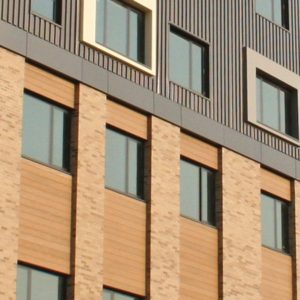Catastrophic events like earthquakes, floods and wildfires have necessitated innovation among the building design and construction industries. Disaster relief architecture has played an important role in rebuilding lost structures and also for constructing temporary buildings for immediate and longer-term housing needs.

The need for short-term housing immediately arises when disaster strikes. More temporary housing like tent structures may be needed immediately, but long-term needs where electricity and plumbing must go into buildings that are more permanent, must be taken into account. Often, this type of housing is in place for several years, or even permanently, as emergency resources funnel across competing infrastructure priorities.
Shipping containers are an intriguing option where building on site may not be feasible. Speed of construction and cost savings have influenced their popularity. The containers can be modified with the additions of cladding, roofs and balconies, but of course these items come with added cost. The practice has its detractors. Per The Guardian,
Mark Hogan, principal architect at San Francisco-based practice OpenScope, thinks devoting shipping containers to housing “doesn’t make any sense”. That’s mainly because cost savings begin to disappear as soon as you start playing around with containers’ basic structure, try to meld units together, or do anything fancy with stacking arrangements.
Prefabricated structures that can be built off-site and shipped either fully assembled or in pieces offer another alternative. They can be customized for specific needs of the area and are an effective tool for both housing and other disaster relief. Per ArchDaily,
The main advantage of prefabricated prototypes is the lack of time and labor required to assemble them, allowing for the quick delivery of aid those in need of emergency shelter. As it is a temporary structure and can be dismantled and transported, it has no impact on the land and can be reused when needed. Most importantly, these designs are generic and flexible, allowing them to adapt to any geography and climate. In this way, the expansion and modification of modules is also easy to execute.
Prefabricated housing has also been a solution for urgent homelessness crises. With construction prices rising, and worker shortages increasing, prefab housing is a lower-cost alternative for cash-strapped governments. With reduction in building materials, construction waste and potential rework factored in, cities like San Francisco and Seattle have committed to prefab housing as an attractive solution.


